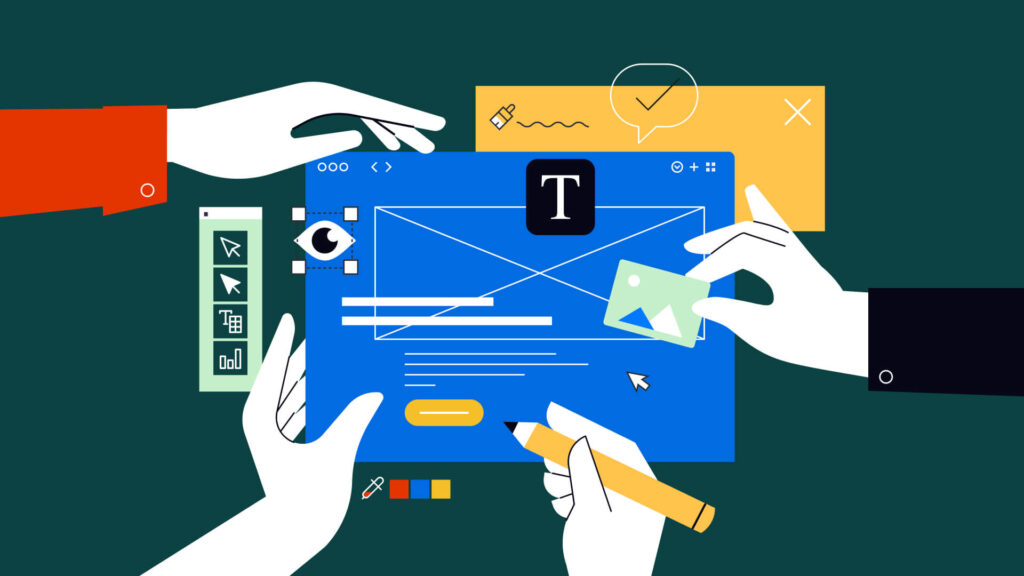A rebranding strategy might just be the ticket to brand survival
Change seems to be the only constant in today’s marketplace, meaning that brands must evolve to remain relevant more than ever.
A successful rebrand can rejuvenate a company, unlocking new opportunities to sustain (or re-start) growth. Statistics show that a successful rebrand can significantly boost customer engagement and revenue. Old Spice, for example, saw a 107% increase in body wash sales after this memorable rebrand.
A comparison before and after, Old Spice’s rebrand and positioning.
But how do you ensure your rebranding efforts don’t rot like expired OJ? (We’re looking at you, Tropicana.)
Tropicana rebrand failure.
This guide will walk you through the essential steps for a successful rebrand rollout, providing actionable insights for creative managers, art directors, and marketers.
We’ll also cover the key factors to consider before you rebrand because it’s not always the smart move.
Why Rebrand? Understanding the catalyst for change
Before embarking on a rebrand, it’s crucial to understand the underlying reasons.
While the benefits are enticing, the risks—such as confusing your audience or losing brand equity—are real. Thorough market research and brand audits are indispensable to ensure alignment with customer expectations and market trends.
Reasons that support a rebrand include:
Market repositioning
If you want to shift your company’s market position or target a new customer segment, rebranding can help redefine your identity to align with new market goals.
Evolving brand philosophy
As your company grows and its values or mission evolve, rebranding can help realign your identity with your updated philosophy, ensuring that the brand message resonates authentically with both internal stakeholders and the target audience.
Expansion
Rebranding can help tailor your identity to resonate with local cultures and preferences if you’re expanding into new geographic regions or international markets.
Acquisitions or mergers
When two companies come together, rebranding can unify the distinct identities into a cohesive brand that represents the newly formed entity–helping alleviate confusion with a unified front.
Negative reputation
If your brand has suffered reputational damage or negative publicity, rebranding can help signal a fresh start and commitment to positive change.
An example here is Burberry, who in the early 2000s suffered from negative association. Their successful rebrand, which saw Emma Watson as the face, made them desirable once more with a 21% increase in revenue, releasing them from their unsightly shackles.
Reasons NOT to rebrand (and what’s needed instead):
Slow sales
If sales are declining, the issue may not be the brand itself but rather the marketing strategy, product offerings, or customer service. A targeted marketing campaign or sales strategy might be more effective.
Crisis aversion
Rebranding solely to cover up a crisis or scandal can (and will) be seen as inauthentic. Instead, prioritize transparent communication and crisis management strategies to rebuild trust.
Operational issues
Problems such as poor product quality, inefficient supply chains, or inadequate customer service should be addressed through operational improvements rather than rebranding, which doesn’t solve the root issues.
Limited brand awareness
If brand awareness is dwindling, invest in marketing and advertising to boost visibility and reach new customers.
Target audience misalignment
Sometimes, the disconnect is not with the brand identity but with how the brand communicates with its audience. Refining messaging, updating marketing channels, or engaging in customer research can create better alignment without the need for a full rebrand.
Crafting the plan in 3 rebranding tips
A successful rebrand starts with a clear objective and is built on a foundation of strategic planning. By crafting a detailed roadmap that guides each phase of the process, your team can navigate the complexities of rebranding with confidence and precision, so that every aspect aligns with your overarching brand goals (and doesn’t veer into murky waters).
- Develop a timeline
A detailed timeline is your roadmap to success. Outline each phase of the rebranding process, from initial research to the official launch, and set realistic deadlines so that every aspect of the rollout is coordinated and efficient.
- Communicate internally
Effective internal communication is the backbone of a successful rebrand–everyone needs to be onboard and energized by the upcoming change, so engage employees early in the process to foster enthusiasm and ensure alignment. Transparency about the rebrand’s goals and benefits helps to build internal advocates who can champion the new brand.
- Allocate resources
Ensure you have the resources—time, budget, and personnel—necessary for the rebrand. Partnering with an on-demand creative design service like Design Force can streamline the process, offering expertise in updating creative assets efficiently and cost-effectively (without the need to hire a whole new team).
Preparing for launch: Internal and external strategies
As you approach the pivotal moment of launching your rebrand, thorough preparation is essential to ensure a smooth and impactful rollout.
This is where strategic planning comes to life, bridging internal alignment with external execution to create a cohesive brand experience. Aim to carefully manage both sides of the launch to maximize your efforts.
8 steps to consider for a smooth brand transition:
- Finalize visual elements
The visual identity of your brand is its most immediate representation. By the time you’re preparing for launch, these elements—including the logo, color palette, typography, and imagery—should be polished and ready to deploy.
Ensure that these visuals reflect your brand’s new ethos and appeal to your target audience.
- Establish brand guidelines
Brand guidelines are the cornerstone of consistency across all platforms and communications.
Develop a detailed brand manual that covers everything from tone of voice to visual elements and messaging. This document should serve as a resource for all team members and partners so that everyone involved in the rebranding process is aligned and informed.
- Consider training and workshops
Your employees are the ambassadors of your brand. Equip them with the knowledge and tools they need to embody the new brand identity through tailored training sessions and workshops.
Focus on helping employees understand the motivations behind the rebrand, how it affects their roles, and how they can communicate the brand’s values effectively.
- Coordinate internal communications
Transparent and effective communication with your internal teams is crucial. Develop a communication plan that keeps employees informed and engaged throughout the rebranding process.
Encouraging employee buy-in will not only foster enthusiasm but also ensure a unified front when the brand is unveiled externally.
- Outsource creative support
If you’re interested in rebranding but don’t have the internal bandwidth to execute it, or the energy to onboard multiple freelancers, an on-demand creative partner for rebranding could be the solution.
The global design team here at Design Force can be on hand in less than 24 hours, acting as an extension to your in-house team. As a strategic partner, we manage high-volume design work to make sure you get a smooth transition to your new brand identity–all under the watchful eye of your dedicated Project Manager.
- Synchronize external launch efforts
The external launch is your opportunity to showcase the new brand to the world. Plan a cohesive campaign that leverages various channels—such as social media, press releases, and digital marketing—to build anticipation and excitement.
Consider creating teaser content to generate buzz before the official launch date, and coordinate the timing of announcements to maximize impact.
- Leverage public relations (PR)
Public relations can amplify your rebranding efforts by securing media coverage and building credibility.
Craft a compelling narrative that highlights the reasons for the rebrand and the benefits it brings to your audience.
- Engage with customers and stakeholders
Your customers and stakeholders are vital to the success of your rebrand. Develop strategies to engage them throughout the process, such as personalized communications or exclusive previews of the new brand.
Encourage feedback and interaction to show that their opinions are valued and integral to the brand’s evolution.
Launch execution: Going live
When it’s time to unveil your rebrand and make a lasting impression, a strategic launch execution ensures your new identity resonates with your audience and sets the stage for ongoing success.
Consider:
A soft launch strategy
Kick off with a soft launch introducing the rebrand to a select audience to gather feedback and fine-tune the rollout, to identify any last-minute adjustments needed for a smoother public debut.
Coordinated marketing and PR
Leverage a mix of digital and traditional channels to announce your new brand. Craft engaging narratives and visuals for social media, emails, and press releases to spark curiosity and interest.
Digital asset updates
Update all digital assets—websites, social media profiles, email signatures—to reflect the new brand and reinforce your identity.
A celebration!
Host a launch event, either virtually or in-person, to showcase the new brand. Encourage social media sharing to amplify reach and create buzz.
Monitoring and feedback
After the launch, gather feedback through social media listening and surveys. Use insights to make adjustments, ensuring the rebrand meets customer expectations.
Embrace the transformation
Rebranding is more than just a visual transformation; it’s a bold leap toward the future you envision for your company. With planning and careful consideration, you can rebrand successfully and reap the rewards.
It’s a significant undertaking, but Design Force is here to support you every step of the way, offering flexible and high-quality on-demand design services that make the transition seamless. Book a call to see just how easy it is to get a team of vetted, highly-skilled designers on your side in just one day.



